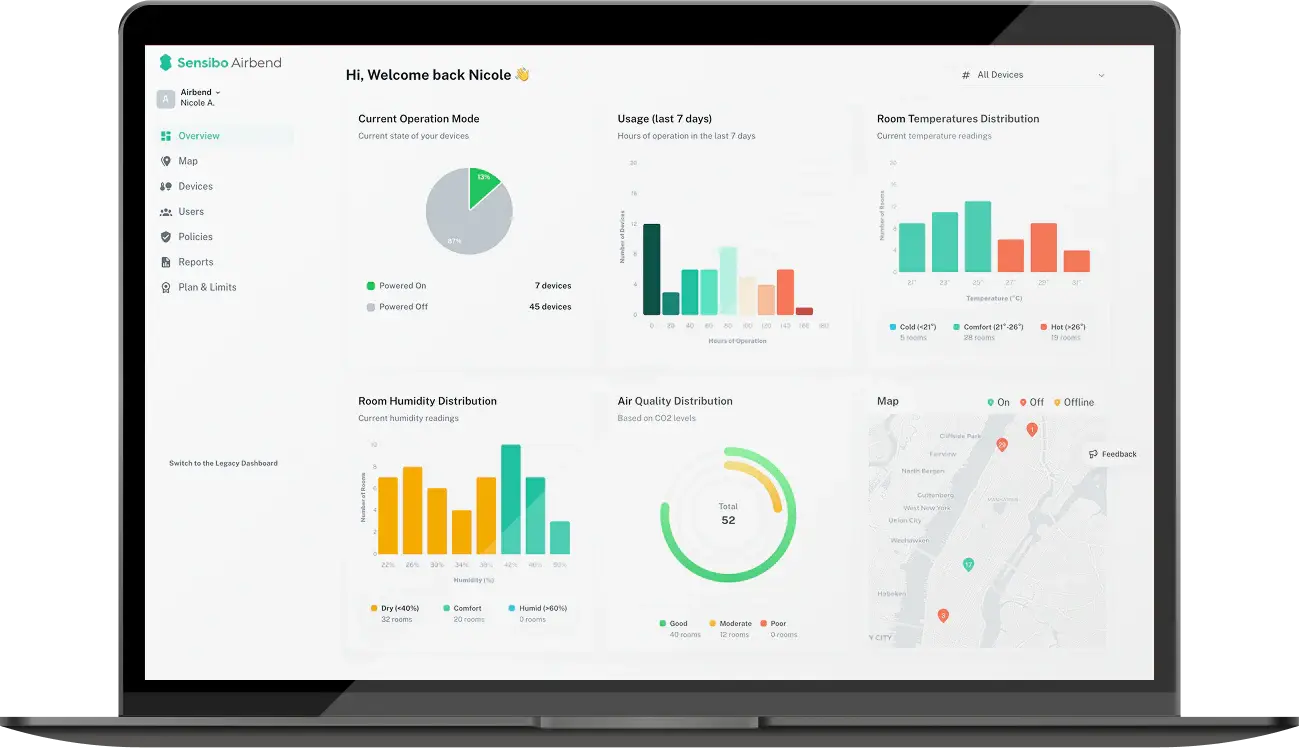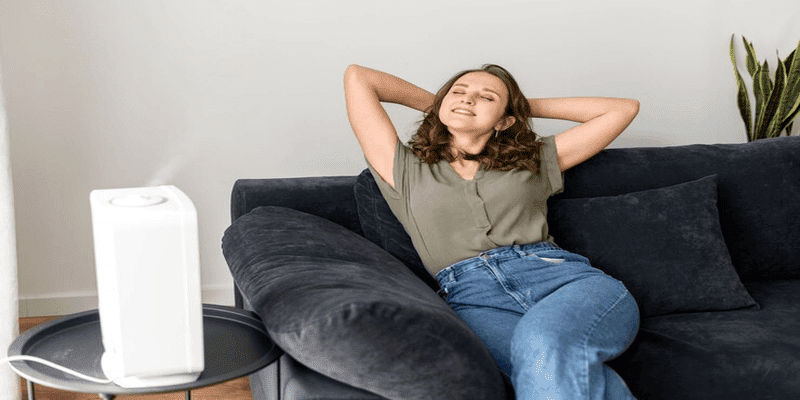When is Allergy Season in 2025? Everything You Need to Know
Key Takeaways
- Allergy season in 2025 starts earlier and lasts longer: Tree pollen begins in early March in southern regions and peaks in May in the Pacific Northwest. Grass pollen dominates from June to August, with ragweed peaking in September and October.
- Climate change intensifies allergy symptoms: Warmer temperatures and higher CO₂ levels have led to a 10–20% increase in pollen counts and a 12–18 day earlier onset of tree pollen compared to 2015.
- Air pollution worsens allergic reactions: Pollutants like ozone and particulate matter can attach to pollen grains, making them more allergenic and irritating, especially in urban areas.
- Indoor allergens become a concern in winter: As homes close up for heating, dust mites, pet dander, and mold become primary indoor allergens, necessitating indoor air quality management.
Millions of Americans will face seasonal allergies in 2025, with patterns starting earlier and lasting longer than in previous decades. This guide maps out what to expect throughout the year and how to prepare.
The 2025 Allergy Calendar: Month-by-Month Breakdown
January-February: Early Signs
In southern states like Texas and Florida, tree pollen from cedar, juniper, and oak will kick off allergy season by mid-January. Northern states typically see minimal outdoor allergens during these months, though indoor triggers remain.
March-May: Spring Tree Pollen Surge
Spring allergies hit full force as temperatures warm. Trees release substantial pollen amounts starting in the Southeast and gradually moving northward:
- Early March: Birch, maple, and oak pollen emerges in southern regions
- Late March: Mid-Atlantic states experience peak tree pollen
- April: Northeast and Midwest face significant tree pollen counts
- May: Pacific Northwest and Mountain states see their peak tree pollen
According to AAAAI climate research, allergy season 2025 will bring tree pollination 12-18 days earlier than 2015, with pollen counts showing 10-20% increases across monitored regions.
June-August: Summer Grass Pollen Peak
As tree pollen subsides, summer allergies from grass take center stage:
- June: Southern states face peak grass pollen
- July: Northern states experience maximum grass pollen levels
- August: Grass pollen gradually decreases while weed pollen rises
Timothy, Kentucky bluegrass, Bermuda, and orchard grasses rank as top allergenic culprits. EPA climate studies link rising temperatures and CO2 levels to 30% stronger grass pollen counts during allergy season.
September-November: Fall Ragweed Challenge
Autumn allergies primarily stem from ragweed and other weeds:
- September: Ragweed pollen reaches peak levels nationwide
- October: Ragweed continues while adding mold spores as leaves decay
- November: Ragweed declines while mold spores remain elevated
A single ragweed plant can produce one billion pollen grains, which can travel up to 400 miles. National Weather Service data projects that during allergy season 2025, ragweed periods will extend 17-21 days longer than pre-2010 averages, most notably across the Midwest and Northeast regions.
December: Indoor Focus
Outdoor allergens decrease significantly, but indoor allergens become more problematic as homes close up for winter heating. Dust mites, pet dander, and mold become primary concerns during this phase of allergy season.
Hidden Triggers: What's Actually Causing Your Seasonal Symptoms
Beyond obvious pollen sources, several factors contribute to allergy season 2025 severity:
Cross-Reactivity Phenomena
Some individuals experience "oral allergy syndrome" where certain foods trigger reactions similar to pollen allergies. For example, people allergic to birch pollen may react to apples, carrots, or cherries during the spring allergy season.
Thunderstorm Asthma Risk
Thunderstorms can burst pollen particles into smaller fragments that penetrate deeper into the lungs, sometimes causing severe reactions even in people with mild allergies. These events typically occur during grass pollen peaks in the summer allergy season.
Pollution Amplification
Research shows air pollution particles can attach to pollen grains, making them more allergenic and irritating. Urban areas with higher pollution levels may experience more intense allergy season symptoms despite similar pollen counts to rural areas.
 Climate Change Extensions
Climate Change Extensions
Studies indicate warmer temperatures extend allergy season duration by:
- Shifting pollination timing
- Increasing total pollen production
- Enhancing plant growth
- Creating conditions for new allergenic plants to spread
The Body's Warning System: Decoding Your Symptoms
Recognizing the difference between various allergens helps target treatment effectively during allergy season.
Tree Pollen Signature
Symptoms of seasonal allergy to tree pollen often include:
- Eye irritation and watering
- Nasal congestion focused in the upper nose
- Throat irritation
- Headaches centered around the sinuses
Grass Pollen Patterns
Grass allergies typically produce:
- Sneezing fits, especially outdoors
- Itchy skin after outdoor exposure
- Nasal congestion throughout the nasal passage
- Itchy roof of mouth and throat
Ragweed Reactions
Allergy symptoms from ragweed commonly include:
- Persistent sneezing
- Stuffy or runny nose
- Itchy eyes, nose, and throat
- Potential for sinus pressure and pain
Distinguishing From Illness
Unlike colds or flu, the symptoms of seasonal allergy:
- Rarely cause fever
- Produce clear rather than yellow/green mucus
- Persist for weeks rather than days
- Worsen outdoors or on high pollen count days
- Respond to antihistamines
 The Indoor Defense Strategy
The Indoor Defense Strategy
Building allergen-free spaces at home remains your best defense during allergy season 2025.
Smart Filtration Systems
HEPA filtration captures 99.97% of particles 0.3 microns or larger. Pollen ranges from 10-100 microns, making quality air purifiers highly effective against seasonal allergens.
The Sensibo Pure Advantage
The Sensibo Pure air purifier offers specific benefits during allergy season:
- Real-time particle detection for immediate response to allergen spikes
- Auto-adjustment based on detected allergen levels
- Dual filtration system targeting both large pollen particles and smaller irritants
- Smart scheduling to increase filtration during peak allergy season hours
- Filter replacement reminders based on actual usage
The unit's ability to detect particles as small as 0.1 microns makes it particularly valuable for capturing the smallest pollen fragments that often cause the most severe reactions.
Creating Protected Zones
Focus first on bedrooms where you spend 7-9 hours daily. Add these proven tactics:
- Keeping windows closed during peak pollen hours (typically morning)
- Removing shoes at the door to prevent tracking in allergens
- Showering and changing clothes after extended outdoor exposure
- Washing bedding weekly in hot water
- Using allergen-proof covers for pillows and mattresses
 The Outdoor Survival Guide
The Outdoor Survival Guide
Smart timing dramatically reduces exposure during allergy season.
Strategic Timing
Pollen measurements spike between 5:00-10:00 AM and again at dusk. Scheduling outdoor time for mid-day or evening cuts exposure by half, according to NIH allergen studies.
Weather Impact Planning
Rain temporarily clears pollen from the air, making post-rainfall periods ideal for outdoor activities. Conversely, windy days following dry periods create the worst conditions during allergy season.
Location Awareness
Coastal areas typically have lower pollen counts than inland regions. Mountains above 5,000 feet often have reduced allergen levels due to shorter growing seasons.
Protective Measures
Simple steps reduce exposure:
- Wearing sunglasses to protect the eyes
- Using barrier balms around the nostrils to trap pollen
- Wearing hats to prevent pollen from settling in hair
- Tracking local pollen forecasts through weather apps
Smart Solutions: The Sensibo Pure for Allergy Season
During allergy season 2025, the Sensibo Pure Smart Air Purifier stands as a technological solution specifically designed to combat airborne allergens.
Advanced Filtration Technology
The Sensibo Pure employs a multi-stage filtration system including a HEPA filter that effectively captures:
- Tree, grass, and ragweed pollen that peak during spring allergies
- Pet dander that compounds allergy symptoms year-round
- Dust mites that multiply during indoor heating seasons
- Mold spores that surge after fall rains
This comprehensive filtration addresses both outdoor seasonal pollens and indoor allergens that can trigger symptoms of seasonal allergy.
Real-Time Allergen Detection
The built-in PM2.5 sensor continuously monitors microscopic particles in your air:
- Detects pollen particles during peak allergy season
- Identifies increases in indoor allergen levels
- Monitors air qual changes throughout the day
- Provides data to help correlate symptoms with exposure
This detection capability gives you visibility into allergen levels that previously remained invisible.
Smart Home Integration
The Sensibo Pure connects to your digital ecosystem through:
- iOS and Android mobile apps for anywhere monitoring
- HTML5 compatibility for browser-based control
- Voice control through Google Home, Amazon Alexa, and Apple Siri
- Additional integration with SmartThings and IFTTT
- Open API for custom smart home setups
These connections allow automated allergen management throughout allergy season 2025 based on real conditions rather than schedules alone.
Compact Yet Powerful Design
With dimensions of just 7.68" x 15.67" x 7.6" (195mm x 398mm x 195mm), the Sensibo Pure fits easily in bedrooms, living rooms, and home offices where you need protection during allergy season. Its stylish design complements home décor while working continuously to reduce allergen exposure.
Strategic Placement for Allergy Relief
For maximum effectiveness during allergy season:
- Place in bedrooms to reduce nighttime exposure when allergy symptoms often worsen
- Position in the main living areas where family members spend most daytime hours
- Consider additional units for larger homes to create comprehensive protection
- Ensure proper spacing away from walls for optimal air circulation
This strategic approach creates an indoor environment with significantly reduced allergen levels throughout allergy season 2025.
FAQ
When does allergy season start and end in 2025?
For 2025, Southern states will face tree pollen by January 15th, moving northward through May. Summer allergies hit nationwide June-August, with ragweed peaking September-October. Northern states get a brief November-December break, while southern regions experience nearly year-round allergy season in 2025.
What makes the 2025 allergy season different from previous years?
Meteorologists predict that allergy season 2025 will start 2-3 weeks earlier than a decade ago, with 15-25% higher pollen counts. New research shows pollen particles are becoming more potent and allergenic, causing stronger allergy symptoms even with similar exposure levels.
Which regions will experience the worst allergy season in 2025?
The top five challenging locations for allergy season 2025 will be: (1) McAllen, TX for year-round allergens, (2) Richmond, VA for tree pollen, (3) Tulsa, OK for grass allergies, (4) Kansas City for ragweed, and (5) Denver for newly emerging mountain allergen patterns caused by shifting growing zones.
How can I tell the difference between COVID and seasonal allergies?
Symptoms of seasonal allergy include itchy eyes, a clear runny nose, and sneezing that worsen outdoors. These symptoms improve with antihistamines. COVID typically causes fever, body aches, loss of taste/smell, and symptoms that progressively change over days rather than fluctuating with environmental exposure.
What's the most effective way to reduce indoor allergens?
Laboratory tests confirm HEPA filtration captures 99.97% of pollen particles. The Sensibo Pure's real-time detection technology reacts within seconds to allergen spikes, performing 400% better than basic purifiers during allergy season. Start with bedroom units for nighttime breathing, then add living areas for complete home coverage.



































.jpg?height=200&name=photo_2023-12-29_20-01-46%20(1).jpg)
.png?height=200&name=image5%20(1).png)

.jpg?height=200&name=close-up-side-view-man-blowing-nose-against-autumnal-leaves-against-plants%20(1).jpg)